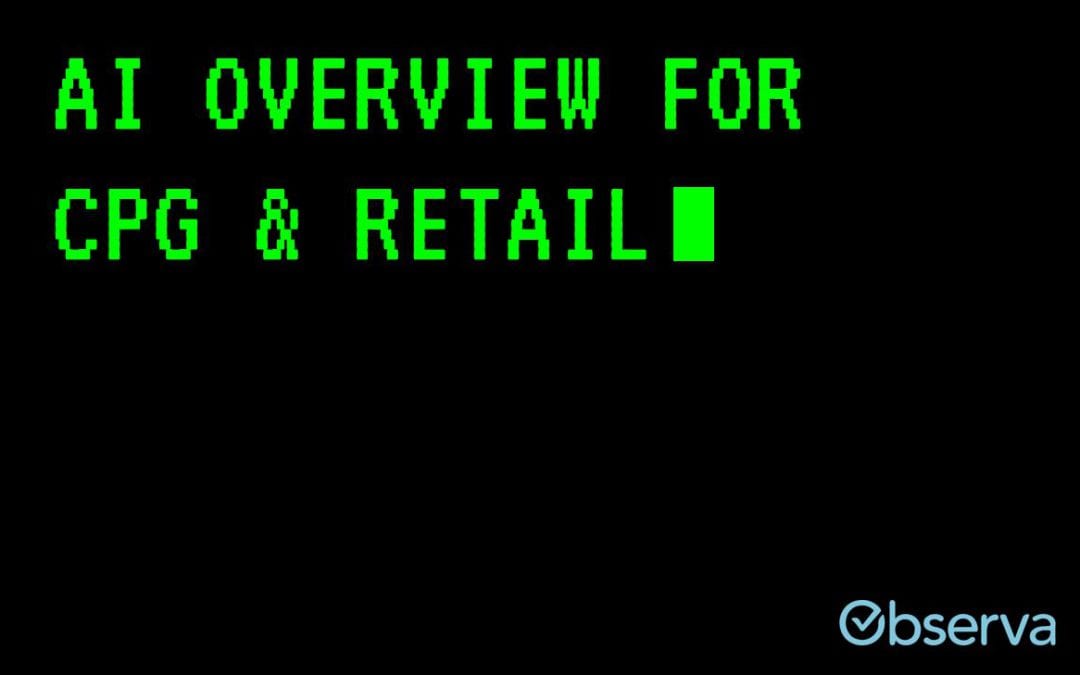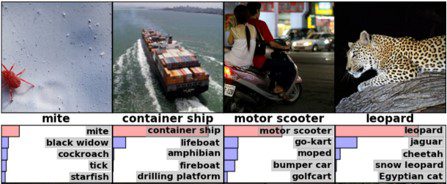by Erik Chelstad, CTO of Observa
The goal of this blog post is to introduce some of the concepts around artificial intelligence (AI), explain how they might be applied to retail and CPG now, and discuss what the future may hold. I’m going to be as succinct as possible and use as few buzzwords as I can in the explanations. The intent is not to let you win a bet around the bean-bag corral with your IT team but to provide a guide for where you might want to apply or learn about applying some of the more recent technology developments to your business.
AI in its current form is pretty much anything that a machine does that makes it seem smart to you, the human observer. It might be a robot shelf stocker or a plugin for your spreadsheet. Don’t worry about the nerds getting in a turf war over this one; the definition of AI will be redefined constantly.
Machine learning is just a subset of AI where programmers give a computer a bunch of data and it will learn from the data, without us having to tell it how. For instance, if you feed all of your sales data for the last ten years into a computer with machine learning, it will be able to tell you what numbers you can expect at a new chain or what sales lift a new planogram will provide.
What’s Happening Right Now?
Here are a few concepts that are in production right now. They will get better as time progresses, but they have the potential, even in their current form, to give you a competitive advantage.
Computer Vision and Image Recognition
This is a hot topic with many new developments—from calculating share-of-shelf to detecting cancer. It doesn’t hurt that image recognition creates really cool pictures that people can actually see and share. This technology can be used to look for your logo on social media, detect share-of-shelf or planogram compliance in store photos, or ensure that your brand standards are being upheld. It works on both still images and video.
Two different subtopics you should understand here are “image classification” and “object detection.” Image classification is the older technology that lets you know that the picture has a certain concept in the image. These concepts can be anything from “happy” to “sad” to “dark blue” to “milk.” Making this useful requires thousands of photos for each concept to be part of the input for the machine. It is useful for recognizing broad concepts, but not for counting or measuring. An example of image classification is the following:
Object detection is newer in practice, and actually locates each target object in the image. You’ll see this when there are boxes around the things you’re looking for. This can require fewer images upfront but more work for humans because each image fed to the machine will need to have boxes drawn around the items in the picture. Object detection does let you count items in an image and determine their locations. Here’s an example of object detection:
Sentiment Analysis
This is the use of AI to determine human attitudes when people talk about a topic. It can be used to measure the overall attitude of consumers toward your product, flag extremely positive or negative comments for review, or compare your brand to another in the media. Examples of this (and why it is not a simple problem) include the following:
- This soup is not like the usual garbage I hate. (positive)
- The salad tasted like it was supposed to be healthy. (negative)
- My friend said it was the best! (negative)
There are many commercial services out there that provide sentiment analysis, and you don’t have to have much in the way of data, so it’s pretty easy to get started.
Predicting Consumer Interests
This is a classic use case for AI that most of us have been using for years when we use Amazon and Netflix. An easy way to think of this is as the technology behind, “If you like this, you might like….” The predictions are getting more and more accurate, and, using this type of technology, you can identify which products to put on the shelf during the next reset or what packaging will be most appealing to a new segment of customers. The challenge here is that you need to have an extensive data set about customers and their interactions with your products, as well as any others. Retailers that sell many brands can capture this data, and those that are online get even more because they can see how long someone virtually “stands” in front of a product or what other items are part of their buying journey.
Predictive Analytics
This is another golden oldie, as far as this technology is concerned, but now it uses more data! Most everyone has taken a set of sales numbers, put it into Excel, and forecast what the next year or quarter would look like. Now they do the same but put in data from everywhere: oil futures, ocean currents, millennial marriage rates, winning scores in the Super Bowl, and so on. You can use this to predict store order rates, product portfolio per location, and so on. This is also available all over and pretty much only requires the data you already have, and in as much detail as you can get—the finer the detail, the better.
Natural Language Processing
Through this method, we can take a normal human request or comment and turn it into commands that a machine can understand. This eliminates the need for people to burn their time (your money) answering routine service, support, and sales requests—for instance, customers calling in and asking how to replace the batteries on their old remote or emailing to ask for a vegan recipe with your almond butter. Imagine giving them a personalized answer in minutes that doesn’t require you to keep staff at the ready. This requires some training on things that only you or your employees know, but it is getting easier and easier now that computers can deduce what the questions are and reply in kind.
Examples in the real world that you may have encountered are the home personal assistants like Google Home and Amazon Alexa. No, the old phone trees that can read your bank statement don’t count anymore.
What’s Happening in the Future?
Here are some ideas that are in the works but won’t be forcing a change on you in the near future. You’ll certainly hear about them in the news and possibly from your board of directors, so it’s good to stay informed and not leap unless you can afford it.
- Self-driving cars – Lots of money and hype around this. Legal concerns are going to be a giant hurdle. I personally worked in the avionics industry, and just getting approval for a device that could make recommendations to a pilot would take the better part of a decade. Look for internal usage, like forklifts and self-organizing warehouse pods way before a delivery van is moving goods across state lines for just-in-time delivery.
- Human-less stores – Amazon knows how to throw a media party, as shown by their Go store, that’s for sure. With the high-maintenance (yup, that’s going to cost more than the initial setup) costs and Amazon’s proclivity for secrecy, no one else is going to be using this or helping turn it into reality anytime soon.
- Walmart robots – This is a cool concept to capture real-time shelf information, and it will probably work in individual stores, if at a fairly high cost. Engineers will first get it working in simple situations (straight shelf, no customers, aligned products), but struggle with changing store layouts, messy products, and so on. When this does fly, it will only fit into large-format big box stores but will need further innovation to go anywhere else.
- Drones – It was easy to imagine how cool this could be when the $99 version showed up under everyone’s Christmas tree in 2016. Now come the legal realities and costs associated with government requirements such having a trained pilot attached to each autonomous vehicle. Watch for Amazon to take the lead on this one because they have the deepest pockets and an owner who just loves flying toys like rockets and cargo planes.


